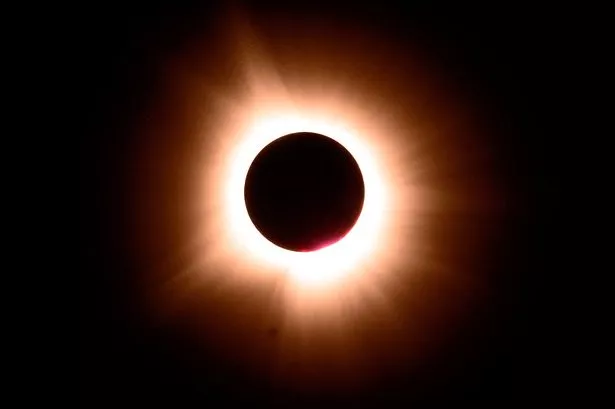On August 2, 2027, the Sun will ‘go out’ for up to six minutes. The incredible phenomenon will be most visible across North of Africa and parts of the Middle East
A rare solar eclipse in 2027 has spiked bookings to five countries.
On August 2, 2027, the Sun ‘go out’ for up to six minutes. The incredible phenomenon will be most visible across North of Africa and parts of the Middle East. Google searches for destinations in this area have surged over the past couple of months as celestial event enthusiasts work out how they can be there when it happens.
The 2027 total solar eclipse will be the longest eclipse of the century visible from land. Some of the best destinations to witness the eclipse include:
- Tangier, Morocco – This area is directly beneath the central shadow, and you can expect around four minutes of totality
- Oran, Algeria – You can expect over five minutes of totality
- Sfax, Tunisia – You can expect over five minutes of totality
- Benghazi, Libya – This area is along the centerline passage, offering about five minutes of totality
- Luxor, Egypt – This area is near the point of greatest eclipse, where you can expect near-maximum totality of over six minutes
READ MORE: Beautiful city 20 minutes from London with 1,000-year-old market and oldest pubs — not OxfordREAD MORE: Eurostar orders UK’s first double-decker trains in 50 years for £1.7 billion
To celebrate the rare event, Wild Frontiers , a B Corp tour operator that specialises in adventure travel, has launched three exclusive ‘eclipse special’ tours, and bookings for all departures sold out within 24 hours. Wild Frontiers has since added new departure dates to its eclipse tour collection and is anticipating similar levels of demand.
Clare Tobin, CEO at Wild Frontiers, said: “This is a once-in-a-lifetime opportunity to witness one of the most incredible natural spectacles. We launched tours in three of the best viewing points in north Africa.
“Travellers can observe the event from a traditional houseboat on the waters of the Nile in Egypt, among the atmospheric UNESCO Roman ruins of Timgad in Algeria or from the epic amphitheatre of El Jem in Tunisia. We previously ran an eclipse tour in Northern Mexico in 2024 and, whilst it was popular, we have seen even more demand for the 2027 tours.”
The term ‘astro-tourism’ came to light towards the end of last year, with experts coining it as a key travel trend for 2025. The term has been used to describe travellers becoming increasingly interested in escaping the urban city lights, in pursuit of dark skies.
Now it seems that astro-tourism is becoming more than stargazing and trips to see the northern lights. Clare says: “Travellers are seemingly fascinated with space, the stars and natural phenomena and they’re turning their attention to the skies. Witnessing celestial events has become more accessible for several reasons, such as more accurate forecasting predications, advancements in technology and increased education and coverage around the topic.
“As demand for ‘astro-tourism’ continues to increase, the ability to travel to these destinations also becomes more accessible. Travellers can now plan and book trips in advance that are centred around significant celestial events. There is no better way to escape and feel at one with nature than to behold such an extraordinary event.”
For travellers who wish to add ‘witness a natural phenomenon’ to their travel bucket list, below are some of most significant eclipse events over the next two years.
12
Most visible from: Iceland, Northern Spain and the Balearic Islands, Greenland, parts of northeastern Portugal and Russia. The best of the eclipse will take place over the water however.
17
An annular solar eclipse happens when the moon passes between the Sun and Earth, but is too far from Earth to completely cover the Sun. This causes what is often referred to as a ‘ring of fire’ effect, where a bright rind of sunlight can be seen around the moon’s silhouette.
Most visible from: Antarctica, Southern South America (particularly southern Argentine and southern Chile), Southern Africa (including South Africa, Namibia and Botswana), Madagascar.
Lunar eclipses
A lunar eclipse takes place when the Earth moves directly between the Sun and the Moon, casting its shadow onto the Moon, which makes it appear a reddish colour. It only occurs during the full moon stage and doesn’t happen every month as the Moon’s orbit is tilted, relative to the Earth’s orbit.
7 September 2025
Most visible from: India, China, Russia, Central Asia, Western Australia, New Zealand, eastern Africa, parts of Europe (especially Czech Republic).
3 March 2026
Most visible from: Northeast Asia (especially Japan, Korea and China), northwestern North America (western Canada and Alaska), Central Pacific Ocean.
28 August 2026
Most visible from: North America (USA, Canada, Mexico, Caribbean), South America (Brazil, Argentina, Chile, Peru, Colombia), Spain, France, Nigeria, Egypt, Pacific Islands (Hawaii, parts of Polynesia).


